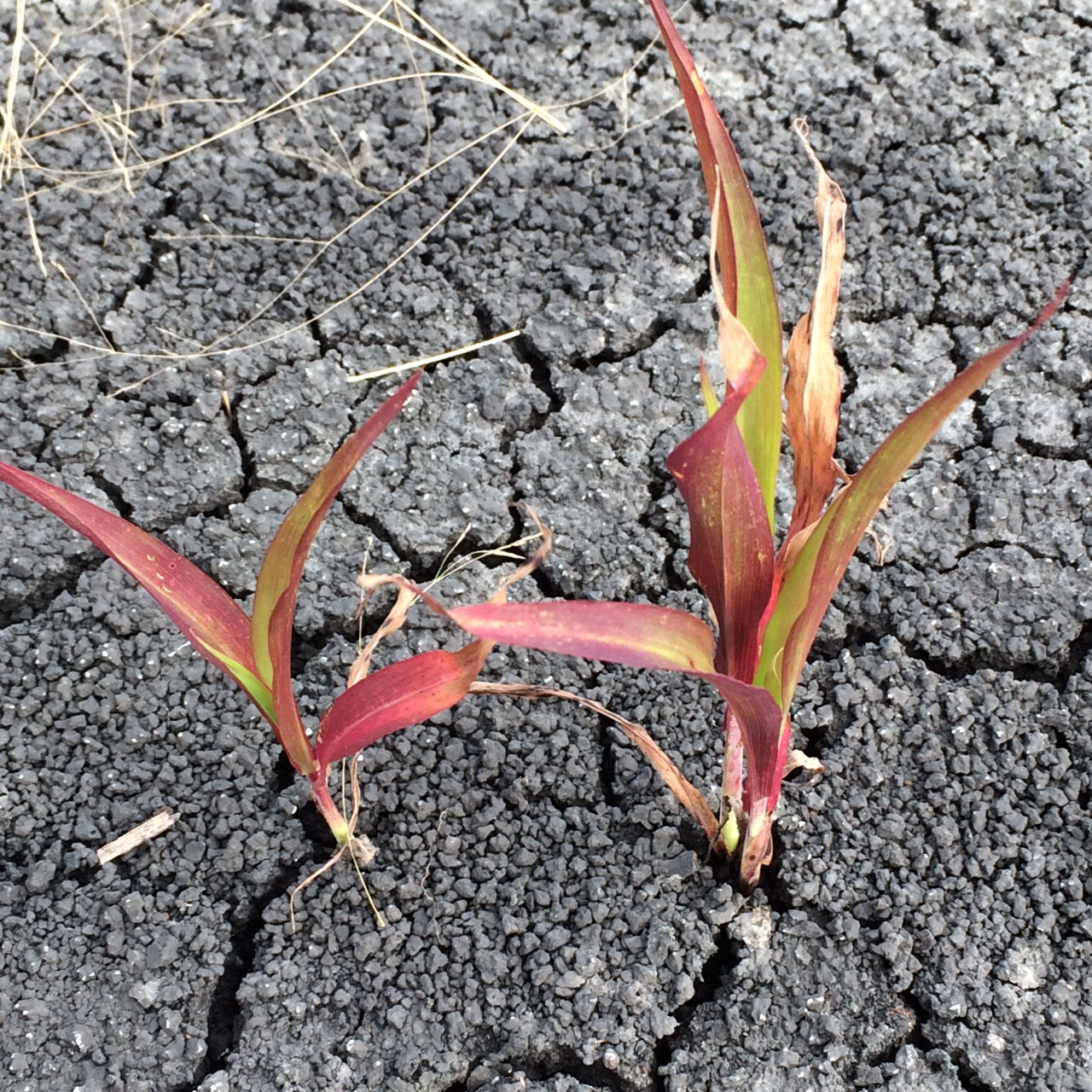Purple Sorghum Seedlings
June 3, 2021
Grain sorghum seedlings can exhibit a purple or magenta coloration of the leaf sheath or leaf blades under early cool conditions. It may be more pronounced when coupled with prolonged cloudy weather. Occasionally an interveinal yellow striping can also occur due to iron deficiency. The coloration is the result of the accumulation of anthocyanins in the tissue and results from insufficient phosphorous (P) uptake or from the plant’s inability to utilize photosynthates from the leaf.
The plants looked normal when it emerged, why are they now a magenta color?
Some anthocyanin producing genes are induced by cool temperatures and diminishing levels of phosphorus within the plant. There is a difference in sorghum products as to the presence or absence of the genes for anthocyanin production. Stress factors that restrict root growth such as compaction, wet and cool conditions, P deficiency, or herbicide injury may result in the accumulation of anthocyanin pigments because the plant cannot utilize all the photosynthates that it produces because of the cool conditions.
How long can the coloration last?
If the cause of the coloration is due to cool temperatures, then the color should fade as temperatures warm and the plant begins to process the anthocyanin. If the cause is due to other stresses, then the coloration will most likely still be present once temperatures warm. If conditions have been cool, scout fields for the magenta coloration and check the fields every few days as the weather warms. Look for newly emerged leaves without the magenta coloration but have a normal green color. If the color does not return to normal, it may be indication of a longer-term problem such as P deficiency.
Will the magenta coloration impact yield potential?
It depends. If the coloration is a result of the inhibition of root growth, P deficiency, or herbicide injury, then yield potential may be reduced. If the coloration is the result of temporary weather conditions in the early seedling stages, then yield potential will not be impacted and the result is only cosmetic. However, if the cold snap lasts more than a week, the plant may not be able to access the required nutrients to generate enough energy for good root growth, leading to a potential yield loss. It is important to realize that the coloration doesn’t impact yield potential, it is the cause of the coloration that may limit yield potential.

Could the underlying cause be something else then a temporary P deficiency?
If a chloroacetamide pre-emergent herbicide was applied under cool and wet conditions, and has moved into the root zone, then the plant can take up more chemical and cause leaf purpling. With the return of favorable weather, the symptoms should disappear.
Could real P deficiency be the cause?
Sorghum plants that are P-deficient are stunted, spindly, and dark green with overtones of dark red on the leaves. The deep red color appears first on older leaves and characteristically progresses upward toward younger leaves. Interveinal tissue can become dark red separated by the green veins.
How do I tell if the coloration is cold induced?
A key indicator of cold induced coloring is a uniform magenta coloration across the field. While other causes may be uniform across the field, they are usually more variable as fields are typically variable in soil types, elevations, and drainage. If there are isolated patches of a magenta color, it is likely an indication of a yield limiting stress.
Sources
Trostle, C. 2013. Purple color in grain sorghum seedings. Texas A&M University Extension. http://texassorghum.org/purple-color-in-grain-sorghum-seedings.html#:~:text=Sorghum%20Tips&text=The%20purple%20color%20occurs%20from,Extension%2C%20B%2D6137.
1038_S2
Seed Brands & Traits
Crop Protection
Disclaimer
Always read and follow pesticide label directions, insect resistance management requirements (where applicable), and grain marketing and all other stewardship practices.
©2024 Bayer Group. All rights reserved.